Kudampuli Egg Curry
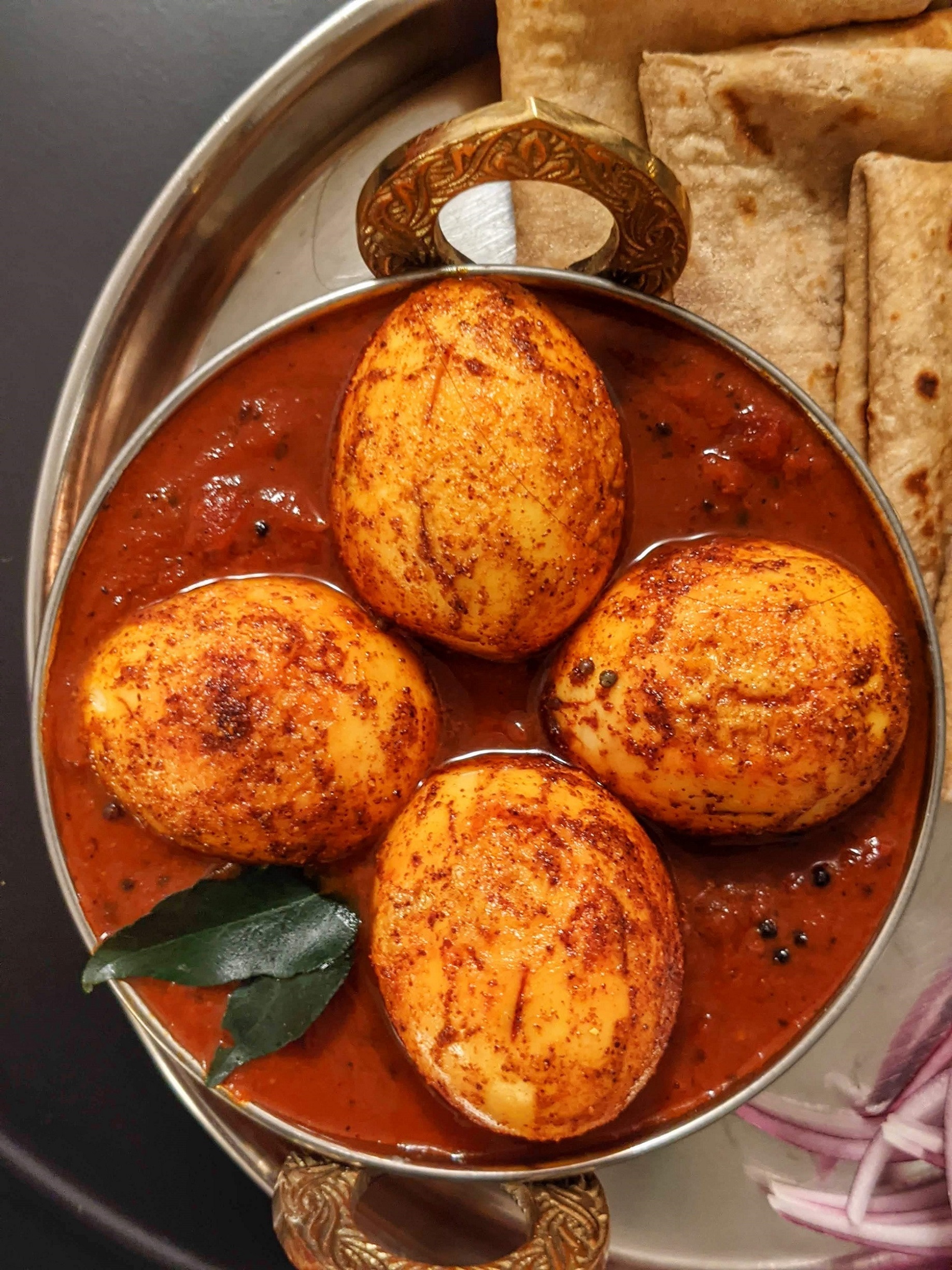
Guys, guys, guys! Have you ever cooked with kudampuli before? I honestly had my mind blown yesterday. It’s tangy like a tamarind and smoky like a fine bottle of peaty whiskey. Now, I truly know what Nash (owner of the incredible Dosa Kitchen, VT) was talking about when he talks about the chicken curry in his book. Holy cow! I never thought I’d love something more than tamarind, but I’ve been proven wrong.
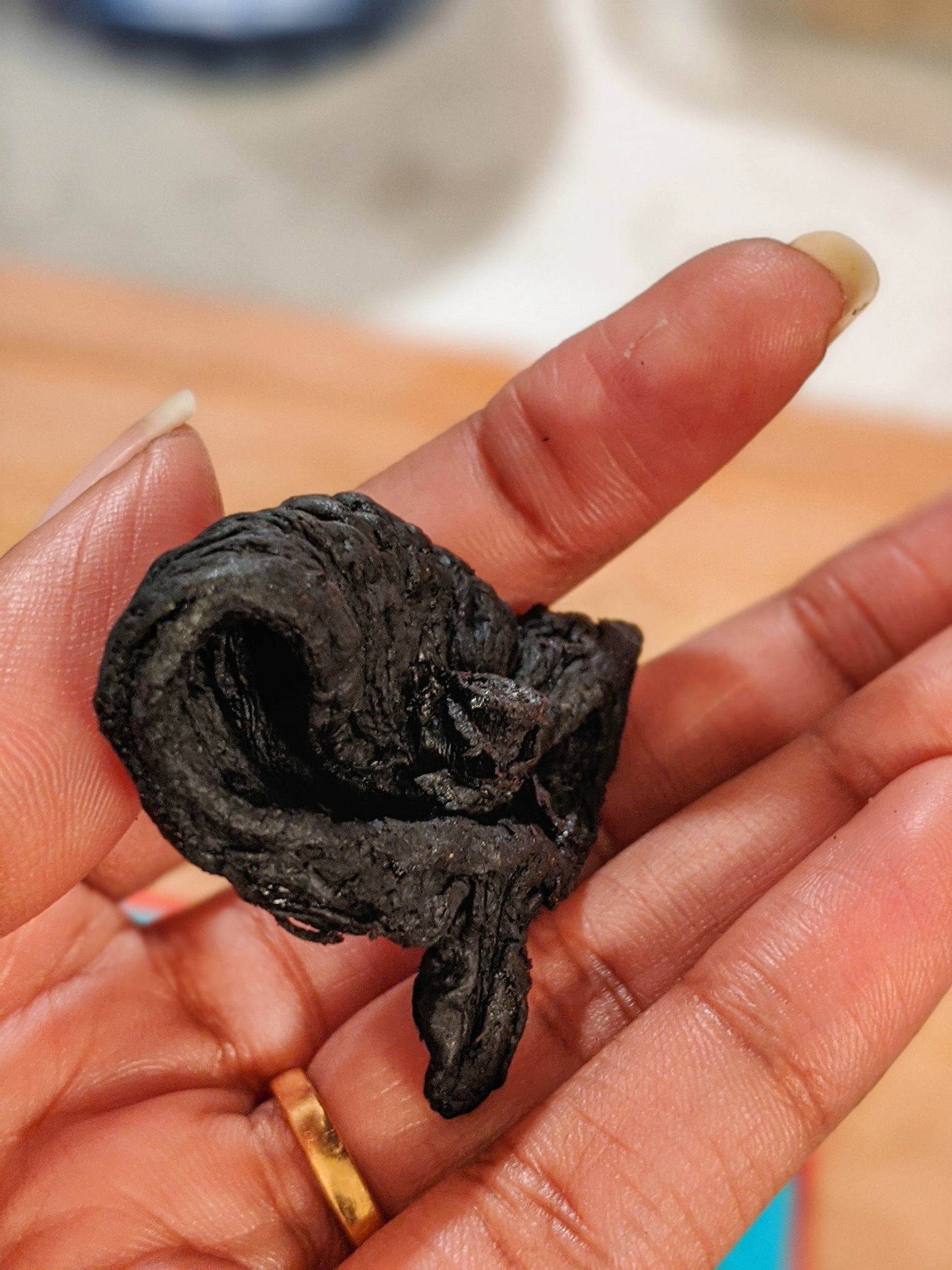
Yesterday was a difficult day for us, in fact the whole week has been, being forced to open our house for sale showings just as we are officially entering the second wave of the pandemic (some landlords, I tell you!) It’s been stressful as hell and by the time we could even sit down for a moment, it was well past dinner time. So, I told Ni to sit back and relax while I chose to relax in the kitchen. That meant a super quick recipe where I didn’t have to make the effort think and could just toss some masala in the pot. Eggs seemed the easiest way to go.
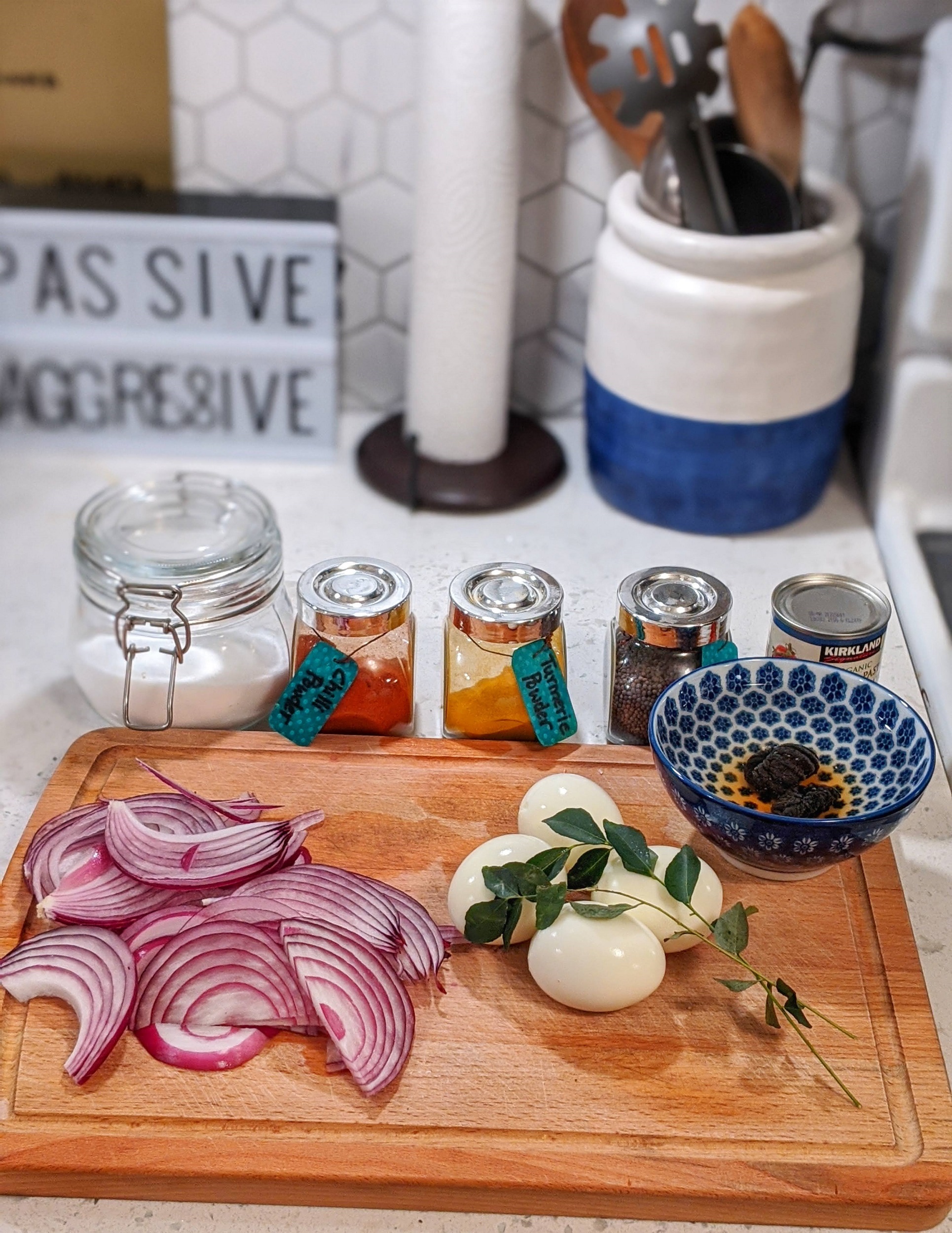
Growing up, egg curry was one of the first few dishes that I learnt to make. My dad absolutely loves it, but my mom is a little particular about how she likes her eggs, so it was one of those dishes that she made when she wasn’t really interested in dinner and just wanted to make something for the three of us. Sometimes when my mom would be down with cramps and migraine, I’d take over the kitchen.
My dad would sneakily come over and ask “So, what are you making for dinner?”
“You want me to make egg curry don’t you?”
“Well, it’s easy for you and gooood for me!” he’d say laughing, driving home the point.

Egg curry really is one of the simpler meals and it goes so well with everything. Chapatis, dosas, rice, on its own to put in a bowl and eat. And honestly, until I’ve had to write this, I didn’t really think I had a recipe. I usually just go with the flow of the day, adding ingredients randomly, and see how it turns out. Last night, I was reaching inside the closet to pull out a bay leaf and found the recently purchased packet of kudampuli instead. The minute I opened it, I grew weak at my knees. Black, soft, dried out, it looks a lot like tamarind, but is shaped more like a small pumpkin and smells like heaven. I wanted to tell the whole world about it! Ni warns me that it’s more of an acquired taste and I think I might have to agree. I doubt that my father would like an egg curry made with kudampuli. For me, however, just the thought of cooking with it lifted my spirits. I was no longer thinking of the possibility of people tracking germs into the house (but seriously, I can’t get my mind off it!) but about having a new experience.
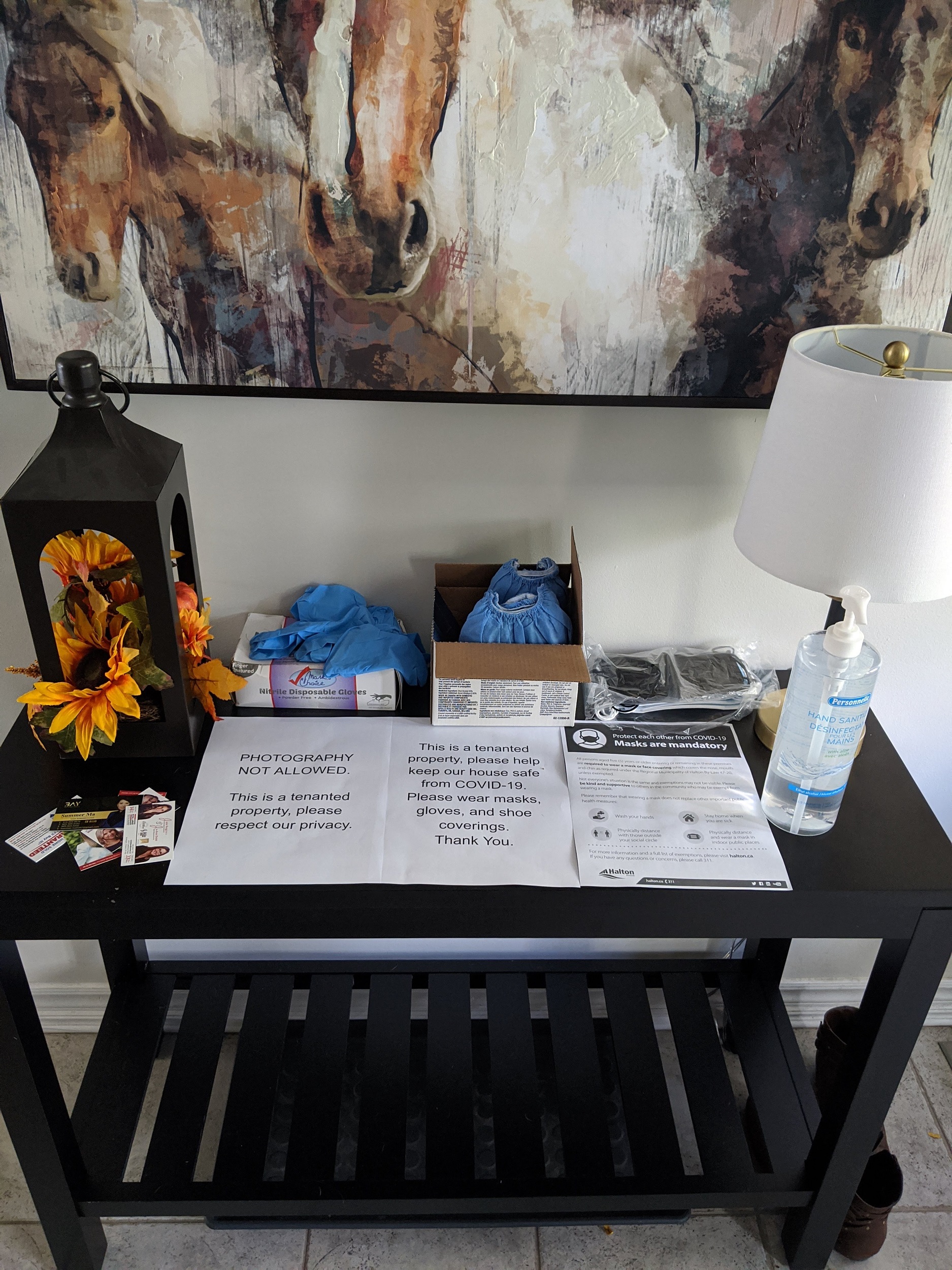
Using kudampuli is a lot like using tamarind, you have to extract the juice. Leave it to sit in a cup of hot water for about 30 minutes while you get the rest of the prep done. To begin with, I like to boil and then roast my eggs in a simple turmeric, chilli mix before starting off. It gives a nice texture to the eggs while seasoning them at the same time. The base is a simple onion-tomato mix, but as I discovered (by accident) last night, tomato puree works better than chopped tomatoes. You can either blanch and puree your tomatoes or if you are in the same predicament as me (and avoiding market runs to the extent possible,) use canned puree.

In the same pot in which you roasted the eggs (I love one pot cooking!) temper some mustard and curry leaves. Add a sliced onion and saute it on low heat. Go back to the kudampuli and squeeze the pulp (in the soaking water) to extract the flavour. Let it sit in the liquid, but add about a tablespoon of the kudampuli water to the onions. This is a little trick I picked up from one of Nash’s recipes. Cooking the onions in tamarind (and now kudampuli) extract. It makes each bite into those onions so juicy and tangy! Keep adding a tablespoon every once in a while until the onions get soft, about 8-10 minutes. Add ginger-garlic paste and cook it down so that the raw aroma goes away. Pour in the tomato puree and season the pot with salt, chilli and turmeric powder. This has to cook down until the mix starts separating from the oil. Keep adding one tablespoon of kudampuli extract every once in a while, when you think it’s starting to stick to the bottom of the pan. Once you think it is ready, taste and see. If the only flavour you get is still tomato, it’s not ready yet. It took about 20 minutes for me with store-bought puree. When done, add in the remaining extract (I also added the pulp, because I love finding little pieces in my curry,) and if you feel like you need more gravy, add about ½ cup of water. Mix well, check for taste and add salt if needed. Cook it down to a consistency that you’d like. I wanted it a little thick so I didn’t add the extra water. Take it off heat and add the eggs. Aaand, that’s it!
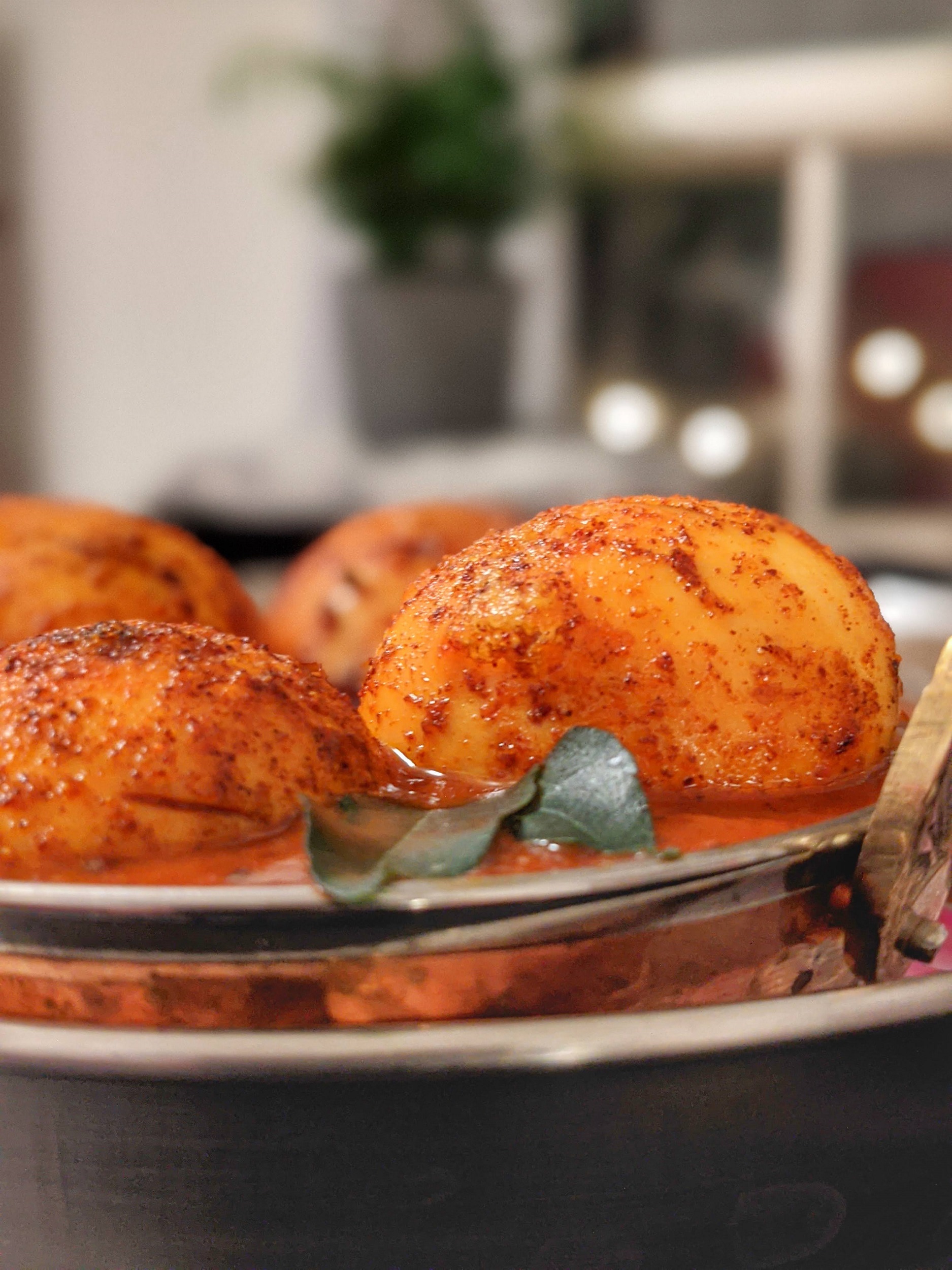
A big heap of those caramelized, tangy, spicy onions, cradling a roasted boiled egg, with some hot chapatis was comfort on a plate and as an added benefit my kitchen smelled so smoky for the rest of the night.
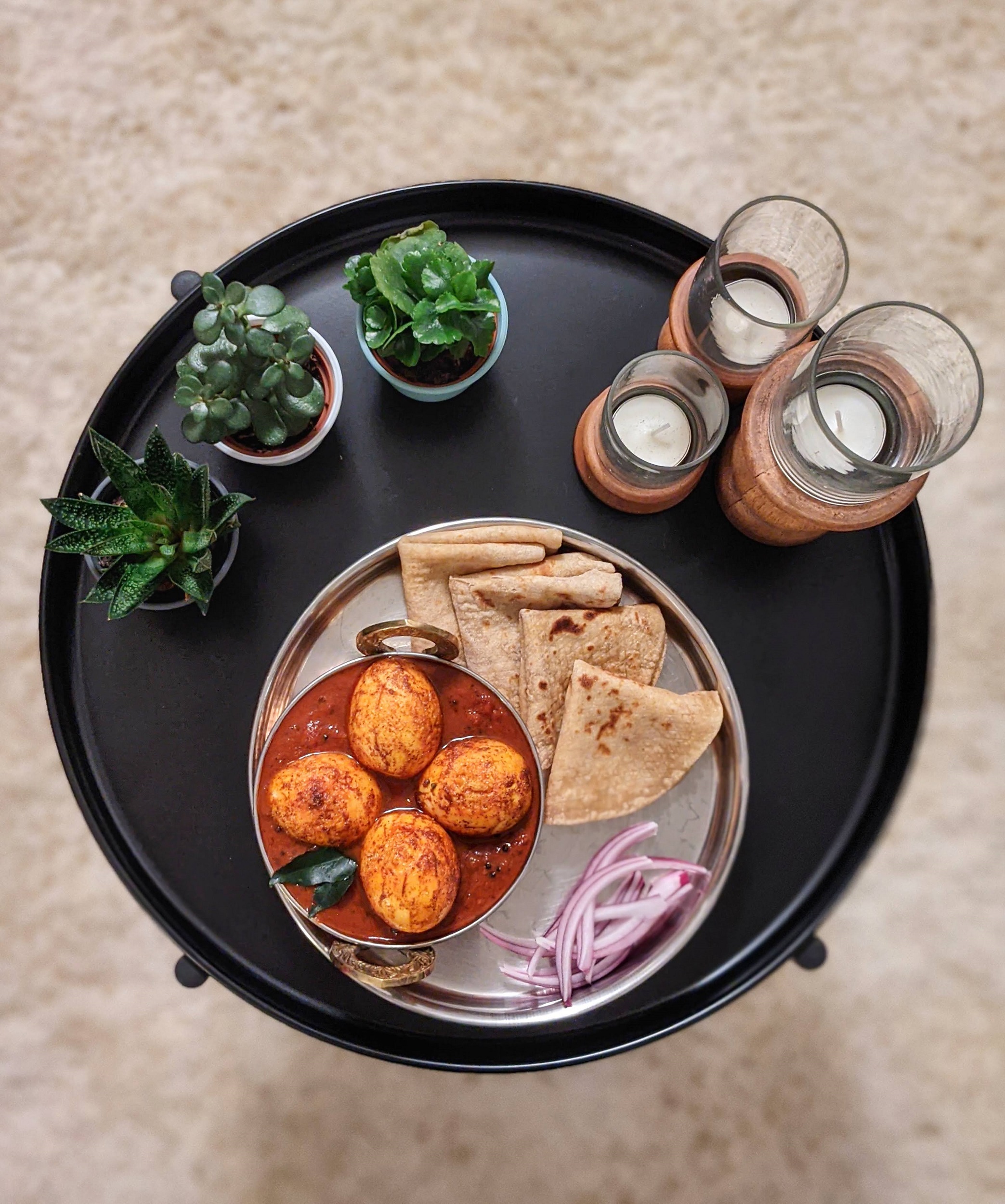
A big heap of those caramelized, tangy, spicy onions, cradling a roasted boiled egg. Comfort on a plate.
Boil the eggs to start with.
In a cup of hot water, add the kudampuli and let it soak for about 30 minutes.
In the pot in which you'll be making the curry, add a little bit of oil. Once heated, add 1/2 tbsp of turmeric, chilli powder and the boiled eggs. Roast for about 3-5 minutes and set aside.
In that same pot, add a bit of oil and temper mustard seeds and curry leaves. Add the sliced onions and saute it on low heat.
Go back to the kudampuli and squeeze the pulp (in the soaking water) to extract the flavour. Let it sit in the liquid, but add about a tablespoon of the kudampuli water to the onions. Keep adding a tablespoon every once in a while until the onions get soft, about 8-10 minutes.
Add ginger-garlic paste and cook it down so that the raw aroma goes away.
Pour in the tomato puree and season the pot with salt, chilli and turmeric powder. This has to cook down until the mix starts separating from the oil. Keep adding one tablespoon of kudampuli extract every once in a while, when you think it’s starting to stick to the bottom of the pan.
Once you think it is ready, taste and see. If the only flavour you get is still tomato, it's not ready yet. When done, add in the remaining extract (I also added the pulp, because I love finding little pieces in my curry,) and if you feel like you need more gravy, add about ½ cup of water. Mix well, check for taste and add salt if needed.
Cook it down to a consistency that you’d like. I wanted it a little thick so I didn’t add the extra water. Take it off heat and add the eggs.
Serve hot with chapatis, dosas or plain rice.
Ingredients
Directions
Boil the eggs to start with.
In a cup of hot water, add the kudampuli and let it soak for about 30 minutes.
In the pot in which you'll be making the curry, add a little bit of oil. Once heated, add 1/2 tbsp of turmeric, chilli powder and the boiled eggs. Roast for about 3-5 minutes and set aside.
In that same pot, add a bit of oil and temper mustard seeds and curry leaves. Add the sliced onions and saute it on low heat.
Go back to the kudampuli and squeeze the pulp (in the soaking water) to extract the flavour. Let it sit in the liquid, but add about a tablespoon of the kudampuli water to the onions. Keep adding a tablespoon every once in a while until the onions get soft, about 8-10 minutes.
Add ginger-garlic paste and cook it down so that the raw aroma goes away.
Pour in the tomato puree and season the pot with salt, chilli and turmeric powder. This has to cook down until the mix starts separating from the oil. Keep adding one tablespoon of kudampuli extract every once in a while, when you think it’s starting to stick to the bottom of the pan.
Once you think it is ready, taste and see. If the only flavour you get is still tomato, it's not ready yet. When done, add in the remaining extract (I also added the pulp, because I love finding little pieces in my curry,) and if you feel like you need more gravy, add about ½ cup of water. Mix well, check for taste and add salt if needed.
Cook it down to a consistency that you’d like. I wanted it a little thick so I didn’t add the extra water. Take it off heat and add the eggs.
Serve hot with chapatis, dosas or plain rice.
Superb